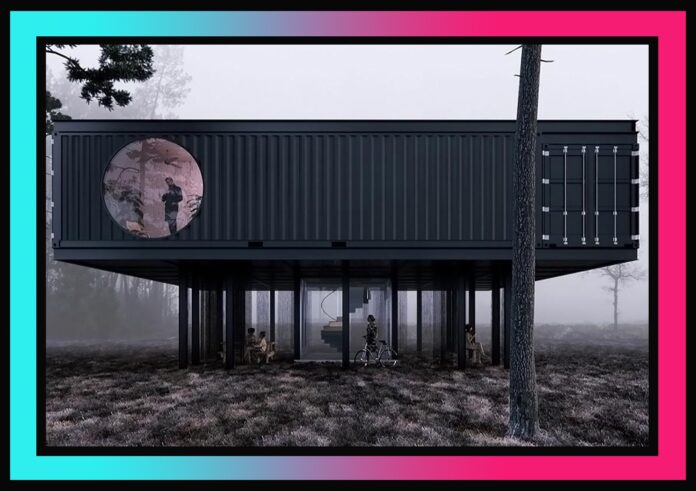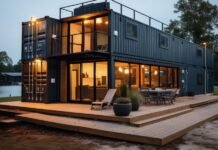Shipping containers—those robust metal boxes that traverse global trade routes—are stepping out of their conventional role as mere transport vessels. In an impressive burst of creativity and resourcefulness, they are being repurposed into a vast array of functional spaces, from cozy tiny homes to park-like communal gardens, and even advanced medical facilities like plug-in Intensive Critical Unit pods. This evolution underscores the flexibility of shipping containers as modular, compact structures designed to meet diverse needs while addressing ecological and economic challenges.
CAPSA’s Design Tomorrow Competition: A Showcase of Innovation
In June, CAPSA Containers put the spotlight on this transformative trend by hosting its inaugural design and architecture competition, aptly named ‘Design Tomorrow.’ This initiative sought innovative, alternative construction solutions aimed at leveraging the unique advantages of shipping containers while emphasizing sustainability. Over two months, participants crafted visionary designs, culminating in an array of imaginative projects. The winners—‘Bureau Agreste’, ‘Flowers in the Garden’, and ‘Side Up Project’—each presented distinctive concepts imbued with eco-friendly principles and modern aesthetics.
Winning designs reflect a growing awareness within the industry regarding the urgent need for sustainable practices. The construction sector is a significant contributor to global greenhouse gas emissions, accounting for over 30%. Thus, inventive approaches like repurposed shipping containers are gaining traction as a solution to reduce ecological footprints while meeting societal needs.
The Promise of Sustainable Construction
As construction faces increasing scrutiny over its environmental impact, the introduction of shipping containers as building materials seems particularly timely. Using these containers promotes ecological benefits, requiring fewer natural resources and ensuring a lower environmental impact than traditional building methods. In this context, CAPSA aptly states,
“Bio-based materials, recycled, reused, smart, and sustainable construction will be our tools to meet these challenges.”
The modularity and mobility of shipping containers allow designers to create structures that are both functional and adaptable—crucial traits in the push towards sustainable development.
First Place: Bureau Agreste – A Modern Office Solution
The first-place design, ‘Bureau Agreste,’ conceived by Hugues Hernandez, Ariane Marty, and Morgan Baufils, exemplifies the potential of shipping containers as modern workspaces. This two-level office design centers around a shared space that fosters collaboration, offering dedicated zones for meetings and private appointments. Elevated from the ground, the office integrates outdoor areas for events and activities, promoting a harmonious connection with nature.

Equipped with innovative features such as rainwater harvesting systems and solar panels, Bureau Agreste is designed for energy efficiency and sustainability. According to the design team, this project aims to minimize ecological impacts by incorporating recycled materials, which includes
“…the use of recycling end-of-life containers, rainwater recovery tank, photovoltaic panels, dry toilets, wood stove, ceiling fan, or even the use of bio-sourced materials from the local industry.”
Second Place: Flowers in the Garden – Merging Nature with Work
Designed by Eu Jin Lim, the second-place design ‘Flowers in the Garden’ represents a striking fusion of workspace and green surroundings. This office-garden hybrid integrates soft screens and diverse plant life into its layout, fostering a world that both promotes productivity and celebrates nature.

Incorporating elements that allow for social distancing without isolation, this design emphasizes a soothing environment where employees can unwind amidst greenery. The benefits of nature on mental health are well-documented, and ‘Flowers in the Garden’ effectively nurtures an ambiance of calmness and creativity—a vital consideration in today’s work culture.
Third Place: Side Up Project – A Flex Space for Collaboration
Finally, the innovative ‘Side Up Project,’ created by Mengfan Sha, Wang, and Zhang, showcases the adaptability of shipping containers as collaborative spaces. This design arranges containers like LEGO blocks to form an interconnected flex space intended for meetings, activities, and community events.

By placing containers in a partially-open configuration, the design encourages collaboration and movement within the space while offering individual areas for focused tasks. This community-oriented approach sets a precedent for future working environments that emphasize connectivity and versatility.
The Future is Bright for Repurposed Shipping Containers
As urban centers grapple with issues of sustainability, space, and community, the innovative designs emerging from competitions like CAPSA’s ‘Design Tomorrow’ serve as beacons of hope. The versatility of shipping containers holds immense potential for reshaping conventional building practices. They not only address pressing ecological concerns but also promote a holistic approach to workspace design, combining functionality, nature, and community engagement.
Whether it be through cozy homes, modern offices, or creative communal spaces, the worldwide movement to repurpose shipping containers is a significant stride toward a more sustainable future. With innovators leading the way, the possibilities truly are endless.














